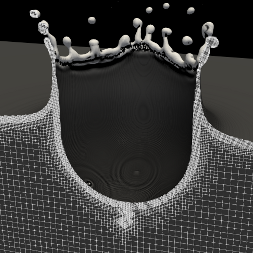Before developing the numerical methods to be implemented in simulation code, the numerical engineer must establish the model that will be discretized. The physical phenomena to be simulated must be transcribed - most often in the form of a set of partial differential equations (EdPs) - and this is usually done in consultation with physicists. Then comes the development of numerical methods to discretize this set of EdPs and the analysis of the proposed schemes. During this process, the mathematician must answer the many questions that arise, among which : the existence and uniqueness of solutions, their stability (and in which direction), the sensitivity to small perturbations, the respect of conservation laws (mass, quantity of motion, total energy), the respect of equilibria (e.g. hydrostatic), the respect of asymptotic regimes (e.g. incompressible limit), the belonging of discrete solutions to the validity domain of the model (positivity of density and temperature, entropy growth, …), etc. Other mathematical questions are raised by the precision of the approximation (difference between the solutions of the model and those of the diagram), such as the order of convergence or the estimation of errors a priori or a posteriori. Finally, it is also up to the numerician to check the validity of the model that has been discretized, in particular by comparing it with the experiments. Among the problems studied within this team, one can cite, without being exhaustive, fluid models in the broad sense (multi-fluid compressible hydrodynamics, with consideration of gravity, surface tension, viscosity, elasto-plasticity, with consideration of slipping/friction, damage, fragmentation), problems of non-linear diffusion, particle transport, questions raised by the coupling of these models, consideration of stiff source terms, etc.




